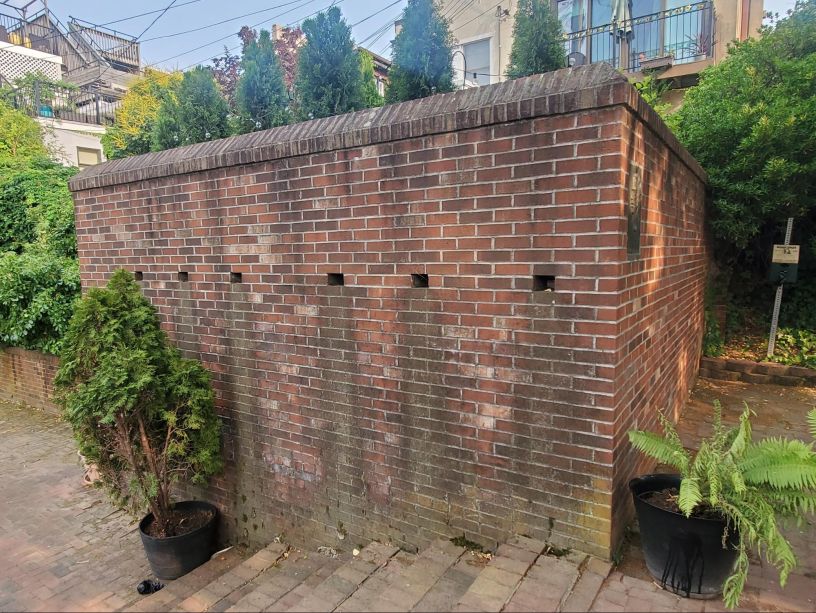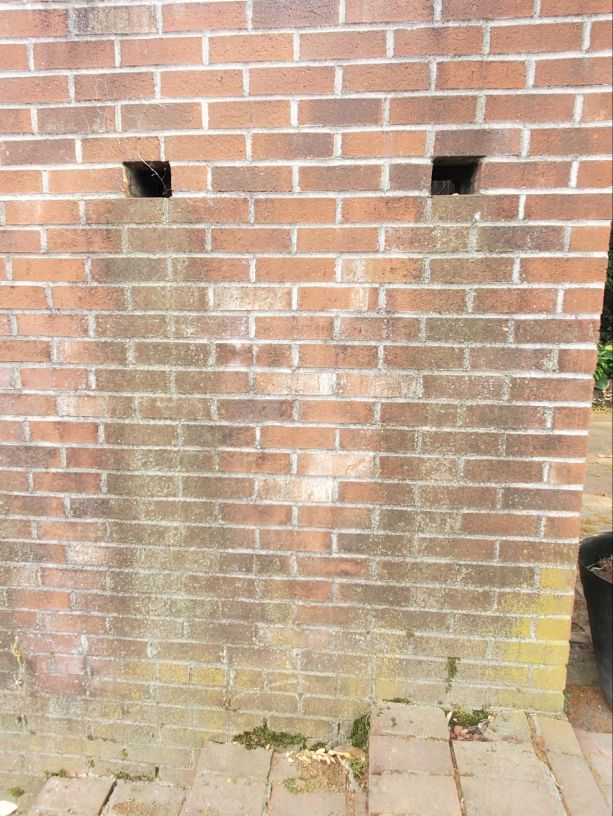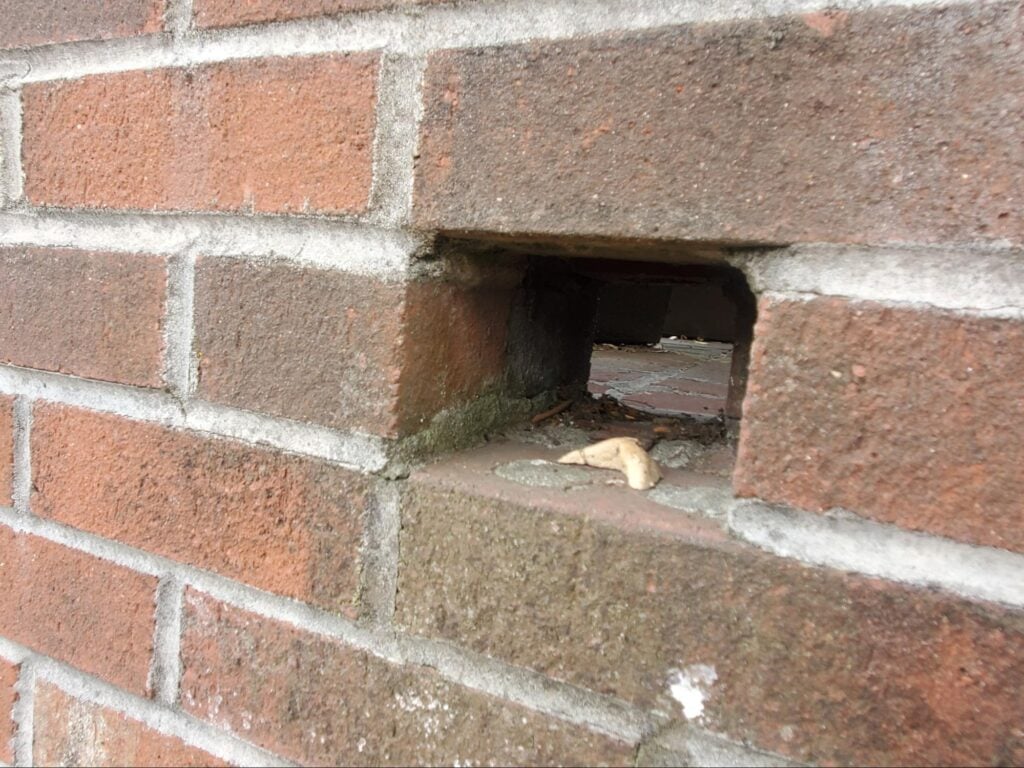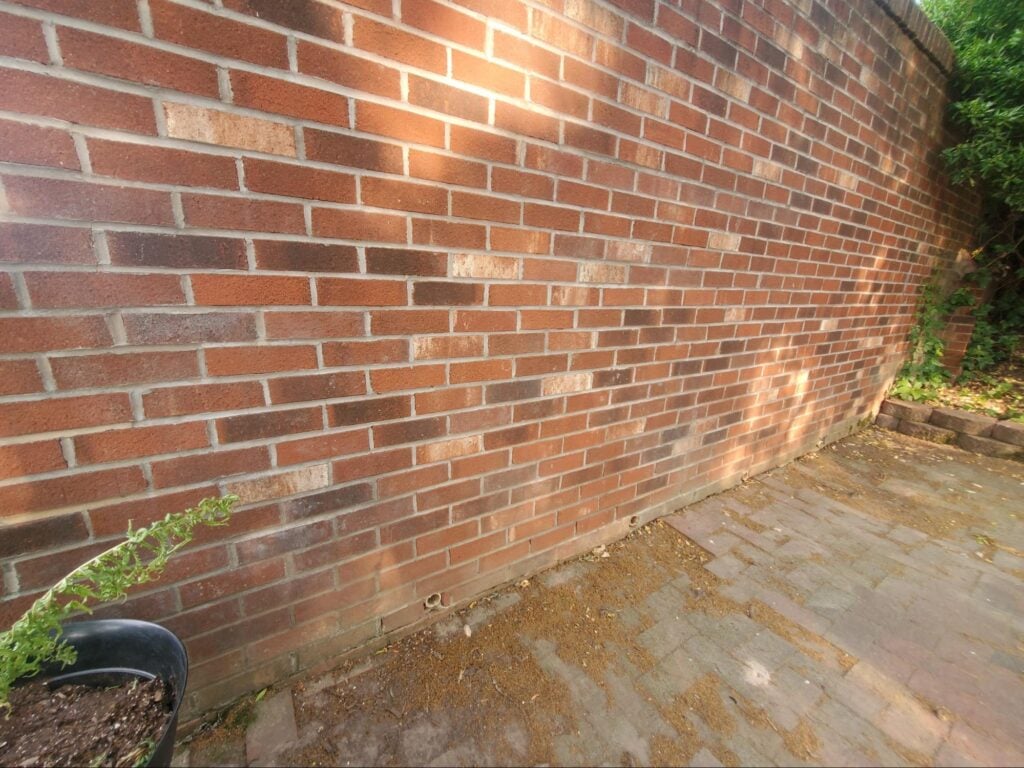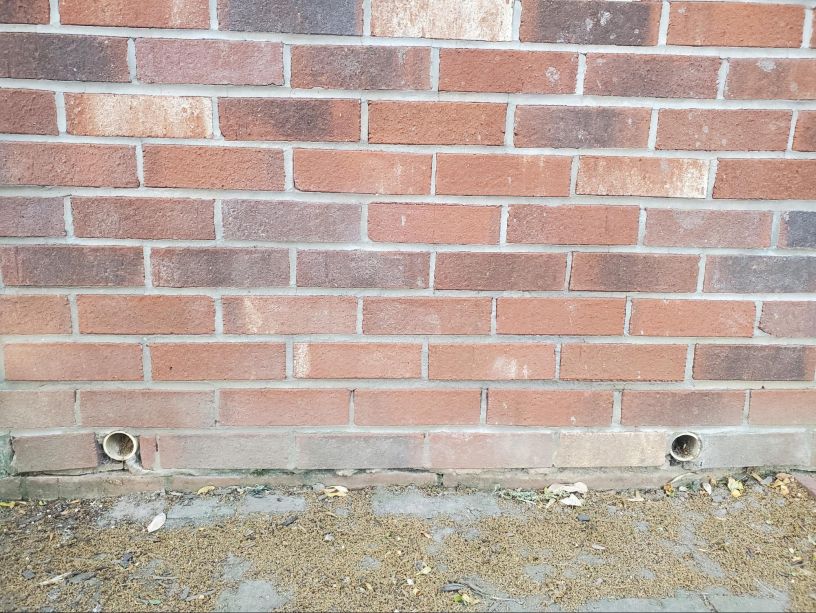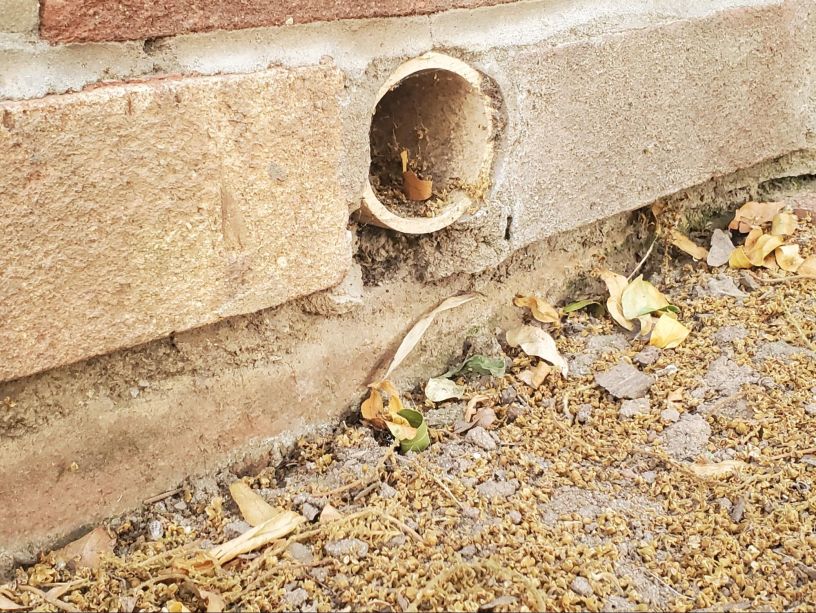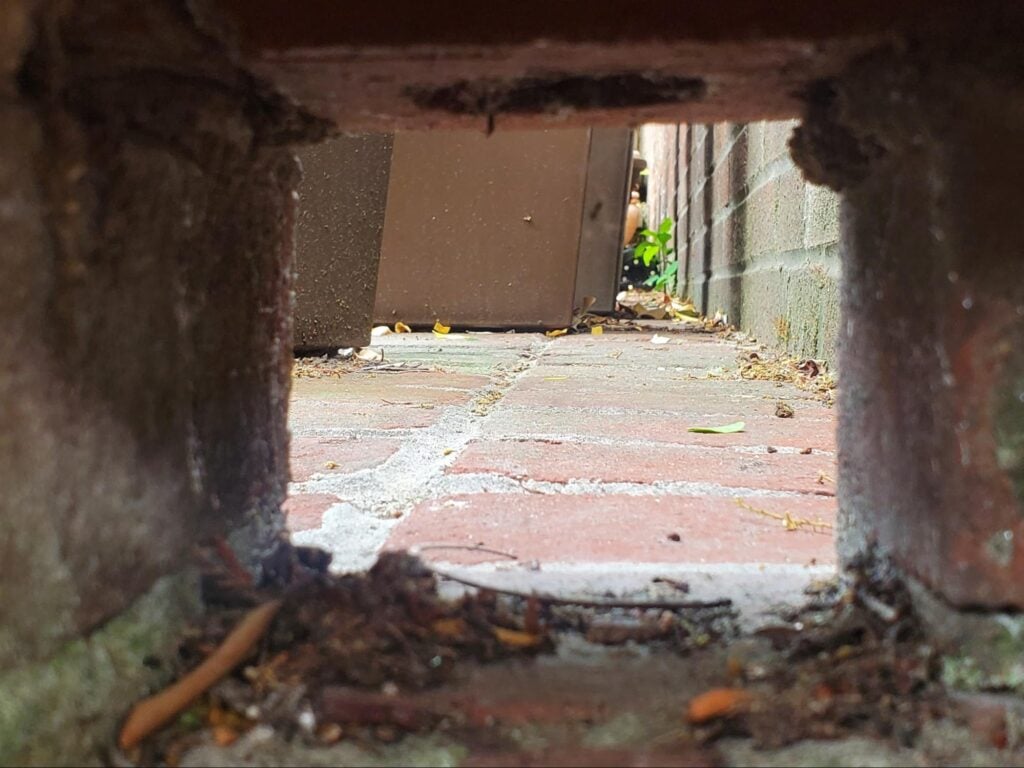What is the Purpose of a Scrupper?
The pictures below show an example of a patio kneewall with holes at the base of the patio area. The holes in the brick wall are scuppers.
Today we will look at the following topics:
The purpose of a scupper
Scuppers are only used in a few types of building assemblies, like this, but this type of assembly is a bit rare. More commonly, scuppers are found at roof parapets where there is no effective drain to a gutter and downspout and at the hull of a ship above the top deck of the boat.
The scuppers allow water to flow from the patio towards the outside and not build-up. Without the scuppers, during heavy rains, the rain water wouldn’t flow freely out of the patio area, The water could build-up like a swimming pool. The scuppers allow the water to flow away.
The purpose of a brick kneewall
Brick knee walls are like regular walls of a building except they don’t come up very high. Sometimes they come up to a guardrail height which is generally around 42″ or to a handrail height of about 36 to 38″ above the floor. In some cases the walls are built to about head height at about 6′ above the floor just to provide a little bit of privacy in one area of a yard, patio or courtyard. In this particular case these walls are built at about that height, just to provide a little bit of privacy from the busy city around the residential yard.
A close up view of one of the scuppers in that brick kneewall follows below. You can see right in from the outside to the inside of the brick patio.
Comparison between a scupper and a weephole
A few of our clients were confused because they thought these scuppers were actually weepholes. These two different types of brick masonry elements are kind of similar, but they’re different in the way they work.
A picture of a large brick retaining wall follows below. This wall is holding back soils and preventing that force and weight from toppling over onto the lower patio. The drains at the bottom of the wall are installed to relieve or alleviate hydrostatic pressure build-up. Hydrostatic pressure build-up is essentially water that builds up inside or around the dirt. Hydrostatic pressure can significantly increase the load on the retaining wall. Structurally, the wall can support a lot of weight but dirt really isn’t that heavy against the wall. Dirt is super heavy but not against an adjoining vertical surface, The structural load is not very high. When the soils are fully hydrated and submerged though, that load becomes extremely high, even against an adjoining vertical surface.
The closer view at the base of the wall shows two PVC pipes that pass from the blind side of the wall to the exterior face of the wall.
An up close view of the weephole follows in the picture below. During and following heavy rains, weepholes like this may emit a stream of water which drips out of the dirt or soils on the blindside of the wall.
In contrast, when looking at a scupper, you can see right through from the outside to the inside, in this case looking at the floor of the interior of the brick patio. By comparison, looking into a weephole will only let you see the dirty inside of a drain pipe or the dirt side of the retaining wall, where the retaining wall is holding back the earth above.
We encourage all of our clients, and all readers of this article and to our blog in general, to prioritize the historic built environment of Washington DC and neighborhoods such as Capitol Hill, Dupont Circle, and Georgetown and become educated on on the difference between proper historic preservation versus improper work which leads to significant damage to the historic fabric of a building.
From a conservation and preservation perspective, several approaches can be taken to improve conditions related to deteriorated historic brick masonry. Primarily, lime mortar brick joints and low temperature fired soft red clay bricks should be inspected and checked on a routine maintenance schedule, either seasonally or at least annually. If brick masonry is kept in good condition, the life of embedded wood elements can be significantly extended. Hire a professional contractor which specializes, understands and appreciates historic construction elements and buildings.
You can learn a lot more on our blog. Feel free to check it out. If you have questions about the historic masonry of your building in Washington DC, fill out the webform below and drop us a line. We will be in touch if we can help.

